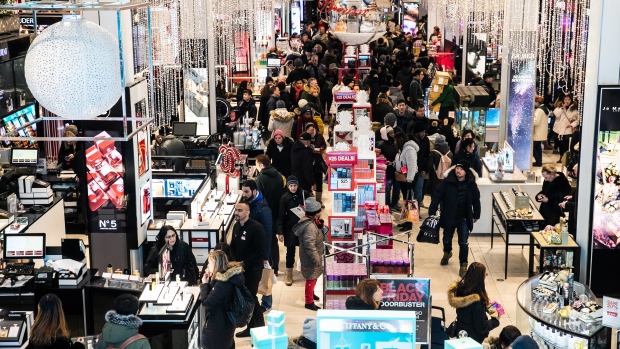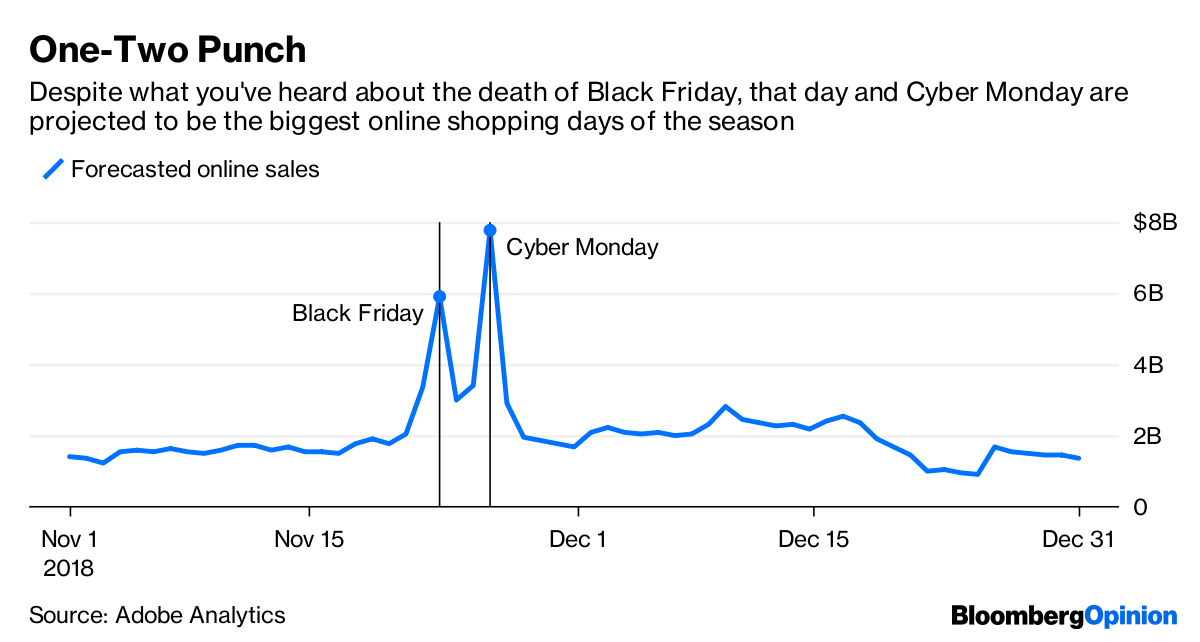Nov 23, 2018
Black Friday is now retail’s digital stress test
, Bloomberg News

Black Friday is here. And by “here,” I mean it has arrived on the calendar, because, of course, retailers have been bombarding us for weeks already with “Black Friday deals.”
The shopping bonanza is vastly different today than it was 10 years ago. And, boom or bust, it tells us little about whether the industry will have a good holiday season overall and even less about the health of the U.S. economy. But that doesn’t mean there isn’t ample intelligence to be mined from this spending circus.
These days, we should think of Black Friday as a wide-scale stress test for the e-commerce and logistics operations of major retailers.
As I’ve noted before, Black Friday and Cyber Monday are arguably becoming more important in the digital arena. This year, online sales are projected to increase 14.8 per cent during the holiday season from the same period in 2017, according to Adobe, whose software powers many large retailers’ websites. However, Black Friday and Cyber Monday are expected to see respective gains of 17.2 per cent and 17.6 per cent, meaning they should see outsize growth on top of already-large sales bases.

STAYING IN STOCK: The industry has been talking a big game lately about revamped inventory strategies. Clothing chains such as Urban Outfitters Inc. have been buying more of their merchandise closer to when it hits stores so they can do so with a clearer view of the very latest trends. Walmart Inc. and Target Corp. have adjusted their toy selections this year to be ready for a gusher of sales from one-time Toys “R” Us customers. If they got all that right, they should be able to stay in stock online through this busy stretch. If a retailer is sold out of hot items like cropped flare denim or L.O.L. Surprise doll sets by, say, Friday afternoon, that will be a hint to me its inventory management still isn’t finely tuned.
MASTERING THE MOBILE EXPERIENCE: The battle for your Black Friday dollars is increasingly playing out in the palm of your hand. And that’s a challenge for retailers, because conversion — the rate at which people go from browsing to buying — tends to be lower on these devices than on desktop PCs. In other words, smartphones are chock full of abandoned digital shopping carts. If retailers want to get you to actually spend money this holiday weekend while you’re killing time at the airport or second-screening at Grandma’s house while watching football, they have to up their game on mobile. That means fast page-load times, fewer steps in the checkout process, and better personalization that serves you the goods you’re most apt to buy.
GETTING CREATIVE WITH SHIPPING: Retailers’ online fulfillment networks are going to be deluged in the five days from Thanksgiving through Cyber Monday. And many of them, especially Amazon.com Inc, have trained us to expect these orders to show up on our doorsteps in two days. I’ll be watching to see if retailers experiment with creative ways of alleviating that pressure. Will any of them offer discounts or rewards-program points to shoppers who don’t mind waiting a week or two for their packages? Will they offer special incentives for picking up your online order in-store, which takes strain off warehouses? And most importantly: Will shoppers end up taking the bait?
Attentiveness and innovative thinking on any of these fronts could help retailers boost their chances of increasing their own hauls at holiday time. How these days play out could help demonstrate which stores are best prepared to prevail in the digital shopping realm all year round.
This column does not necessarily reflect the opinion of the editorial board or Bloomberg LP and its owners.
Sarah Halzack is a Bloomberg Opinion columnist covering the consumer and retail industries. She was previously a national retail reporter for the Washington Post.






